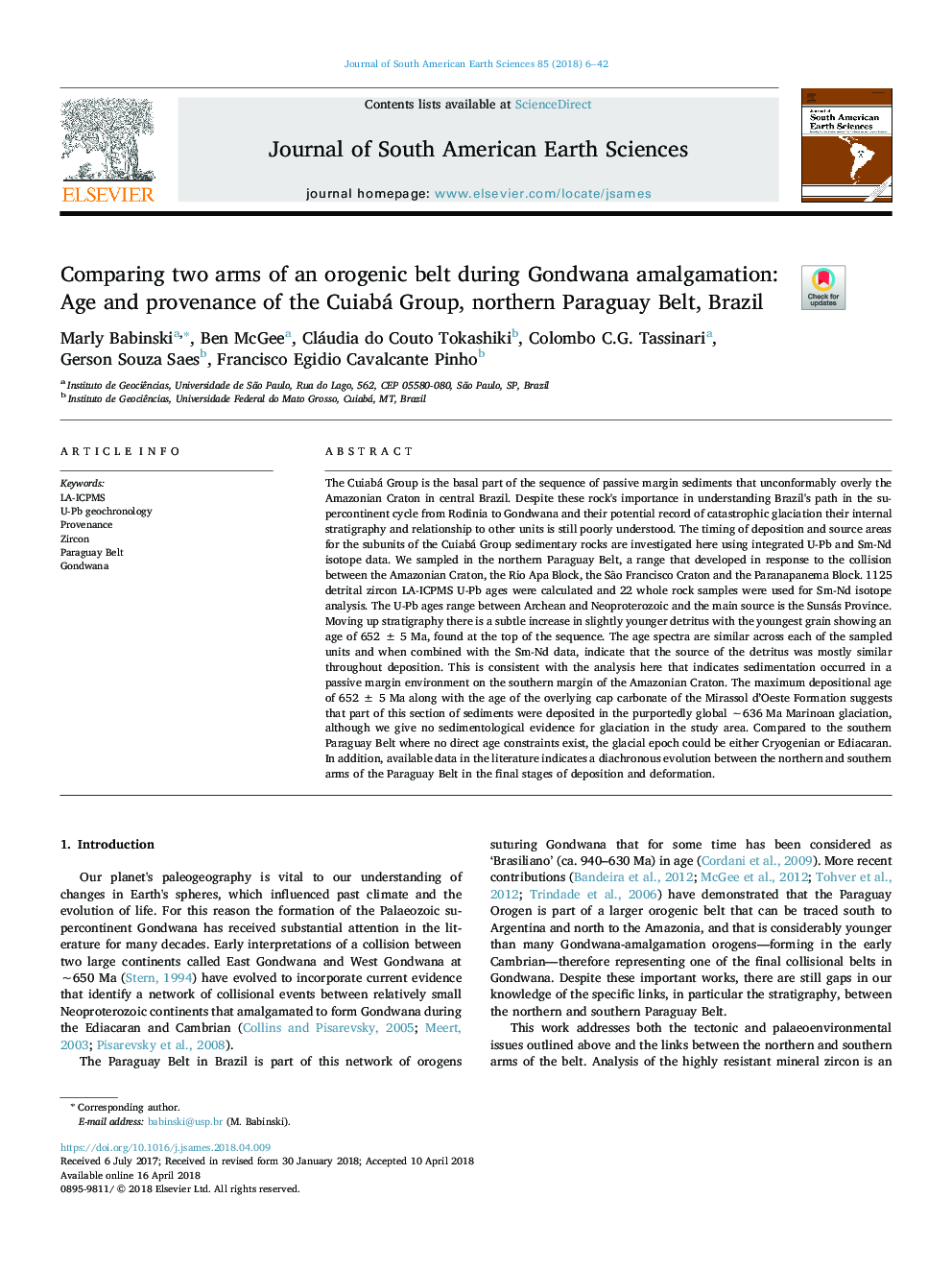| کد مقاله | کد نشریه | سال انتشار | مقاله انگلیسی | نسخه تمام متن |
|---|---|---|---|---|
| 8907608 | 1635125 | 2018 | 37 صفحه PDF | دانلود رایگان |
عنوان انگلیسی مقاله ISI
Comparing two arms of an orogenic belt during Gondwana amalgamation: Age and provenance of the Cuiabá Group, northern Paraguay Belt, Brazil
دانلود مقاله + سفارش ترجمه
دانلود مقاله ISI انگلیسی
رایگان برای ایرانیان
کلمات کلیدی
موضوعات مرتبط
مهندسی و علوم پایه
علوم زمین و سیارات
علوم زمین و سیاره ای (عمومی)
پیش نمایش صفحه اول مقاله

چکیده انگلیسی
The Cuiabá Group is the basal part of the sequence of passive margin sediments that unconformably overly the Amazonian Craton in central Brazil. Despite these rock's importance in understanding Brazil's path in the supercontinent cycle from Rodinia to Gondwana and their potential record of catastrophic glaciation their internal stratigraphy and relationship to other units is still poorly understood. The timing of deposition and source areas for the subunits of the Cuiabá Group sedimentary rocks are investigated here using integrated U-Pb and Sm-Nd isotope data. We sampled in the northern Paraguay Belt, a range that developed in response to the collision between the Amazonian Craton, the Rio Apa Block, the São Francisco Craton and the Paranapanema Block. 1125 detrital zircon LA-ICPMS U-Pb ages were calculated and 22 whole rock samples were used for Sm-Nd isotope analysis. The U-Pb ages range between Archean and Neoproterozoic and the main source is the Sunsás Province. Moving up stratigraphy there is a subtle increase in slightly younger detritus with the youngest grain showing an age of 652â¯Â±â¯5 Ma, found at the top of the sequence. The age spectra are similar across each of the sampled units and when combined with the Sm-Nd data, indicate that the source of the detritus was mostly similar throughout deposition. This is consistent with the analysis here that indicates sedimentation occurred in a passive margin environment on the southern margin of the Amazonian Craton. The maximum depositional age of 652â¯Â±â¯5 Ma along with the age of the overlying cap carbonate of the Mirassol d'Oeste Formation suggests that part of this section of sediments were deposited in the purportedly global â¼636 Ma Marinoan glaciation, although we give no sedimentological evidence for glaciation in the study area. Compared to the southern Paraguay Belt where no direct age constraints exist, the glacial epoch could be either Cryogenian or Ediacaran. In addition, available data in the literature indicates a diachronous evolution between the northern and southern arms of the Paraguay Belt in the final stages of deposition and deformation.
ناشر
Database: Elsevier - ScienceDirect (ساینس دایرکت)
Journal: Journal of South American Earth Sciences - Volume 85, August 2018, Pages 6-42
Journal: Journal of South American Earth Sciences - Volume 85, August 2018, Pages 6-42
نویسندگان
Marly Babinski, Ben McGee, Cláudia do Couto Tokashiki, Colombo C.G. Tassinari, Gerson Souza Saes, Francisco Egidio Cavalcante Pinho,